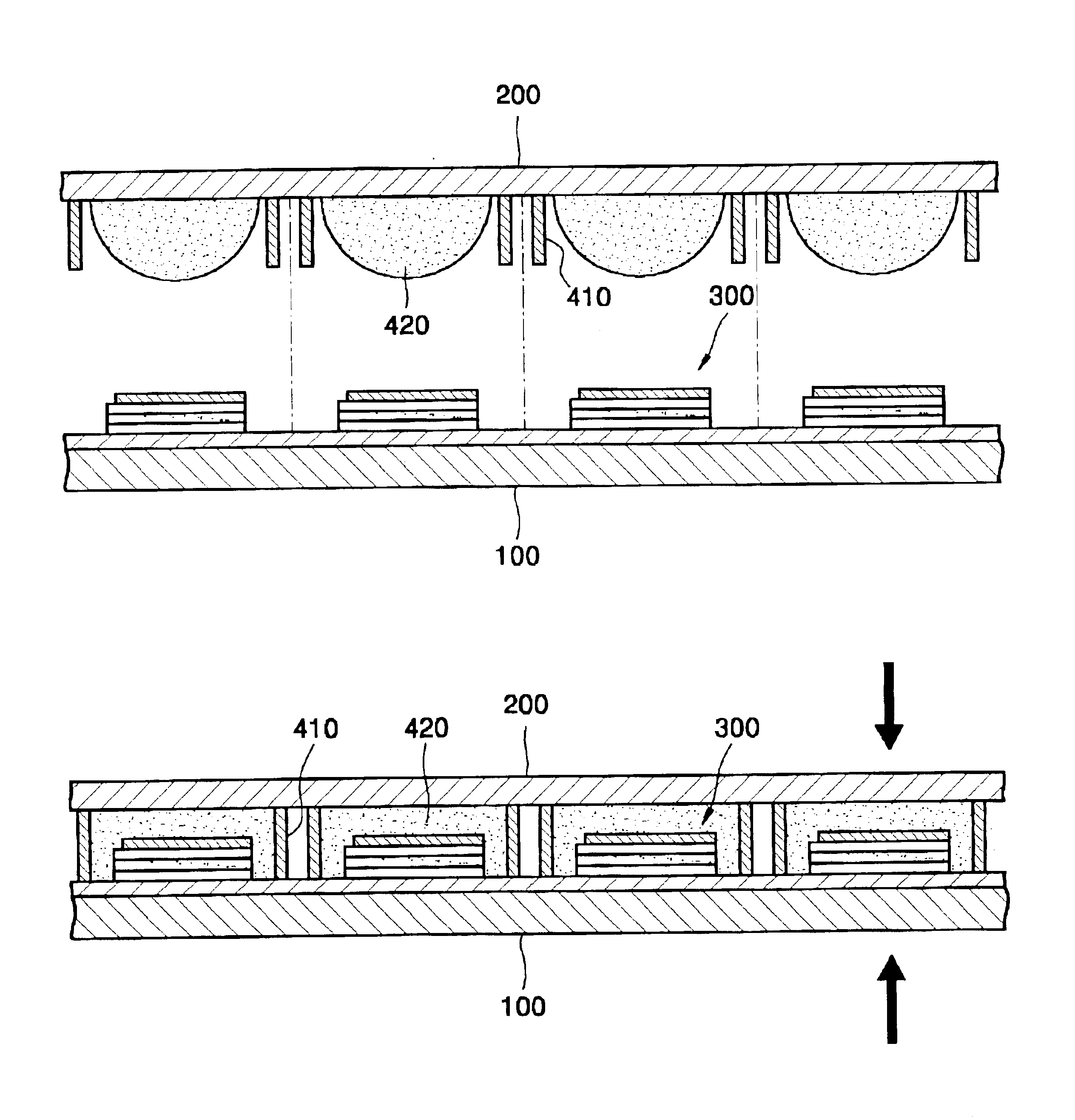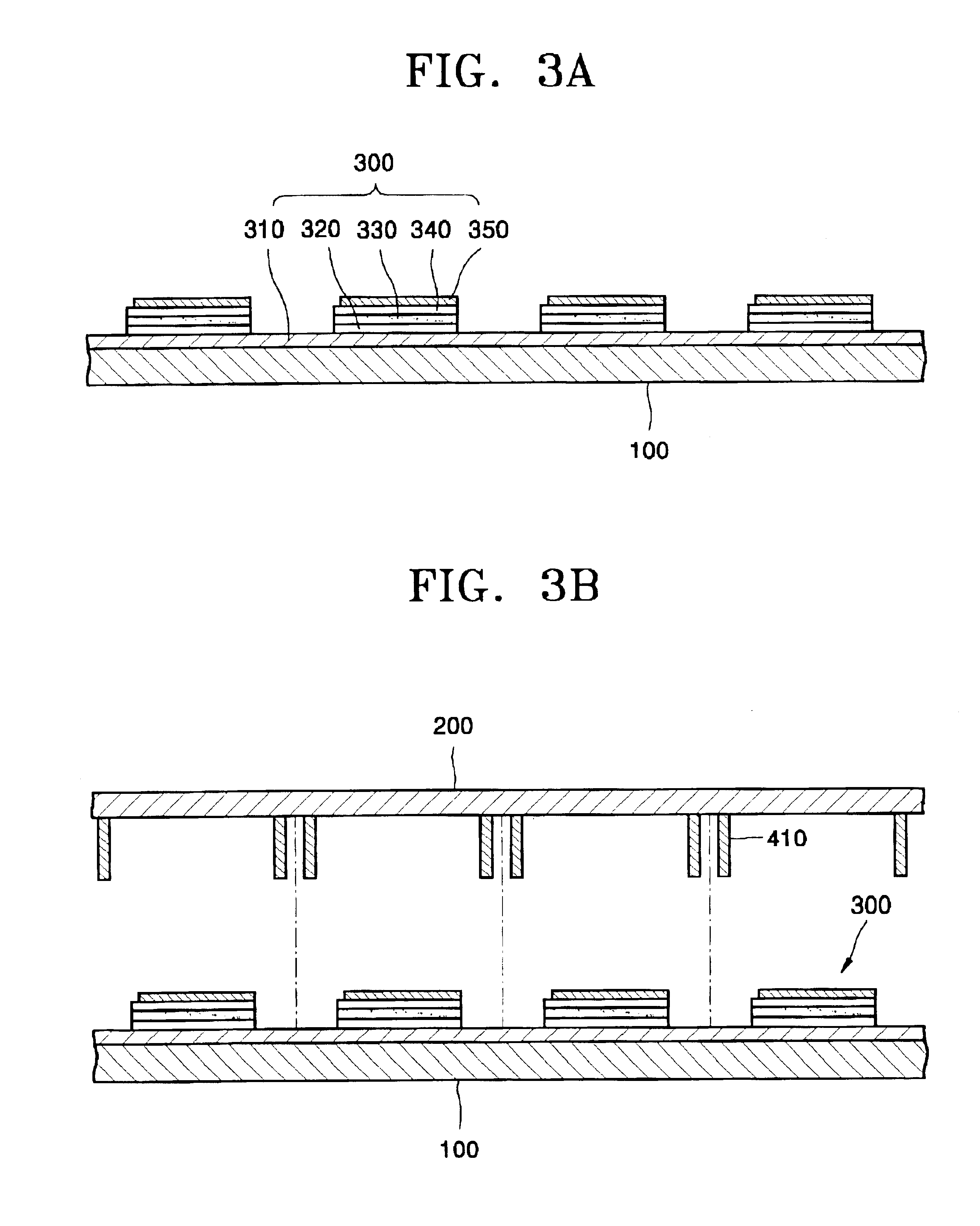Method for encapsulating organic electroluminescent device and an organic electroluminescent panel using the same
a technology of electroluminescent devices and organic materials, which is applied in the manufacture of electrode systems, cold cathode manufacturing, and electric discharge tubes/lamps, etc., can solve the problems of electroluminescent characteristics sharply degraded, second electrode formed on the organic layer may experience deterioration in performance, and the effect of increasing manufacturability
- Summary
- Abstract
- Description
- Claims
- Application Information
AI Technical Summary
Benefits of technology
Problems solved by technology
Method used
Image
Examples
example
[0034]An organic EL device was fabricated by sequentially depositing an anode formed of an ITO layer, a hole injection layer formed of IDE406, a hole transporting layer formed of IDE320, an emitting layer formed of CBP:lrppy, a hole blocking layer formed of Balq and a cathode layer formed of aluminum. An inert liquid layer was formed on the cathode layer.
[0035]The organic EL device was evaluated with and without a second sealant by measuring the growth of dark spots, i.e. the non-emmision area ratio, with the passage of time by microscopy. Measurements were taken at a brightness of 100 cd / m2. Table 1 shows the non-emmision area ratio measurements for 0 to 45 days for EL devices with and without a second sealant.
[0036]
TABLE 1Non Emission Area Ratio (%)TheWithoutAHSPassageSecond478XNR 5516DennumFluorinertof TimeSealantLV1HP8723LS-65EGC-1700Initial0.10.10.10.10.10.1 1 day0.10.10.10.10.10.1 5 days0.20.10.20.20.30.210 days0.50.10.30.30.50.220 days0.80.20.60.60.70.730 days1.10.31.00.90.91...
PUM
 Login to View More
Login to View More Abstract
Description
Claims
Application Information
 Login to View More
Login to View More - R&D
- Intellectual Property
- Life Sciences
- Materials
- Tech Scout
- Unparalleled Data Quality
- Higher Quality Content
- 60% Fewer Hallucinations
Browse by: Latest US Patents, China's latest patents, Technical Efficacy Thesaurus, Application Domain, Technology Topic, Popular Technical Reports.
© 2025 PatSnap. All rights reserved.Legal|Privacy policy|Modern Slavery Act Transparency Statement|Sitemap|About US| Contact US: help@patsnap.com



